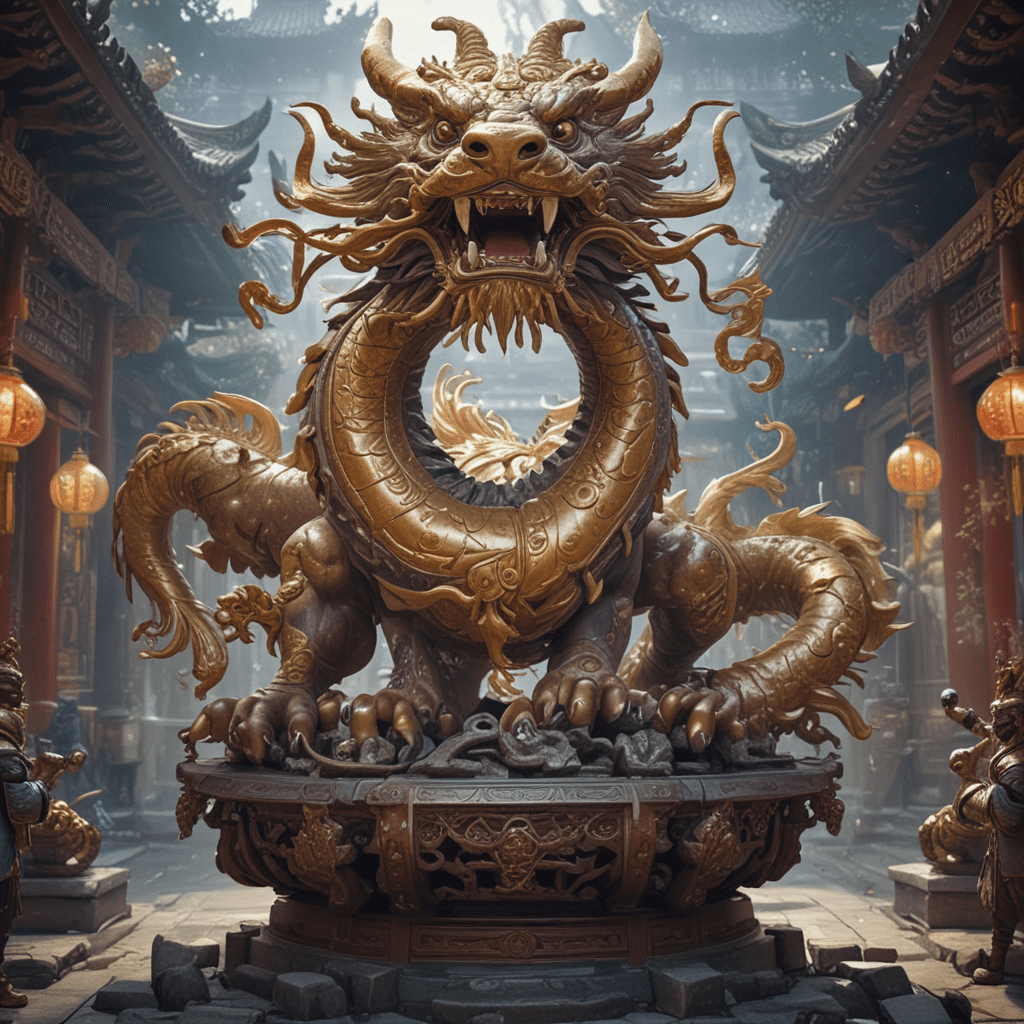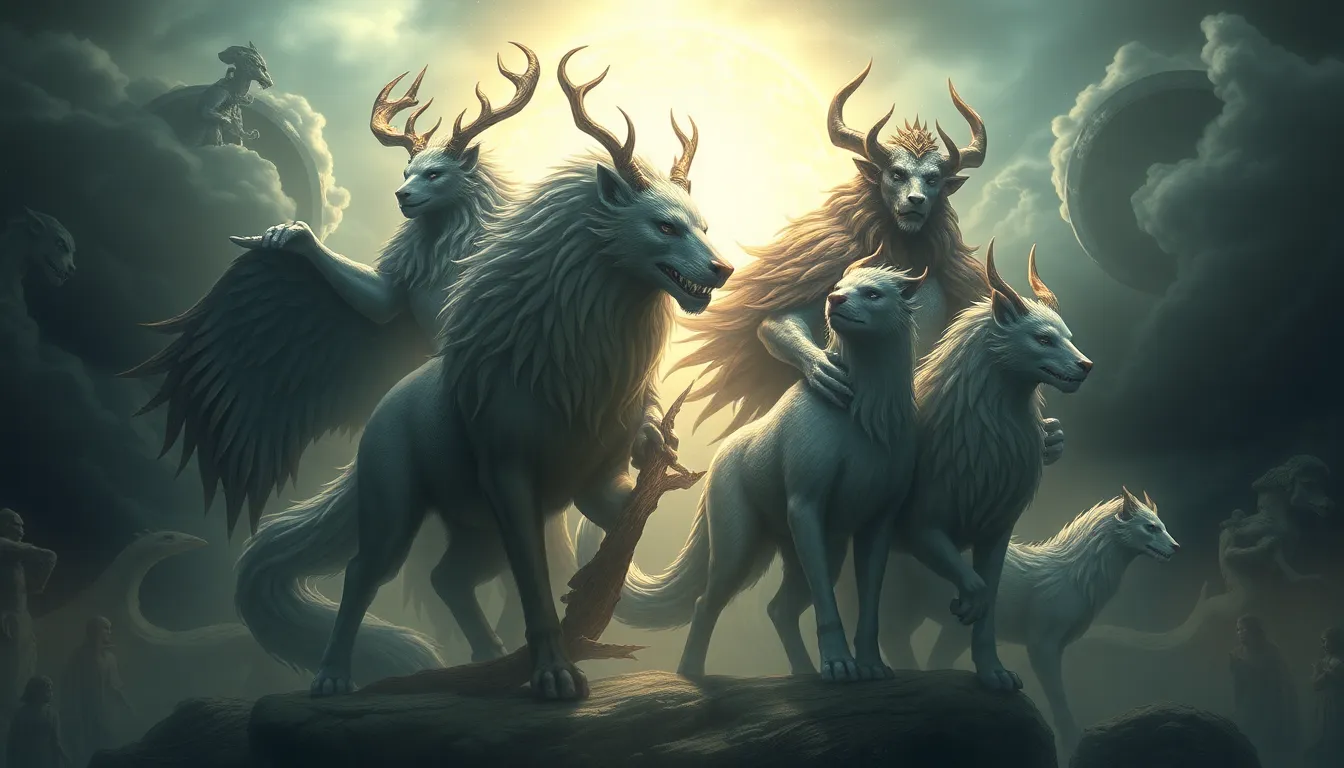Chinese Mythological Symbols and Their Meanings
1. Introduction
Chinese mythology, steeped in thousands of years of tradition and folklore, is a vibrant tapestry of fantastical creatures, deities, and symbols that shape the nation's cultural identity. These symbols, embedded in art, literature, and customs, hold immense significance, serving as portals to the beliefs, values, and aspirations of the Chinese people.
2. The Dragon
The dragon, an iconic figure in Chinese mythology, embodies power, strength, wisdom, and good fortune. Its serpentine form, adorned with scales and claws, evokes a sense of awe and reverence. The dragon is closely associated with water, rivers, and the underworld, symbolizing the vital force that nourishes and connects all living beings.
3. The Phoenix
The phoenix, a mythical bird, is a symbol of beauty, virtue, and rebirth. Its vibrant plumage, adorned with intricate patterns, represents the sun's radiant energy and the hope for renewal. The phoenix is often depicted alongside the dragon, creating a harmonious balance between celestial and terrestrial realms. It is associated with the empress and is considered a harbinger of prosperity and peace.
4. The Qilin
The qilin, a majestic creature, symbolizes prosperity, peace, and harmony. Its deer-like body and dragon's head create a blend of gentle grace and celestial power. The qilin's appearance is believed to bring blessings and good fortune, making it a popular motif in Chinese art and architecture.
5. The Tiger
The tiger, a symbol of courage, ferocity, and strength, is associated with the west, autumn, and war. Its striped coat and piercing gaze evoke a sense of untamed power and determination. The tiger is a guardian figure, protecting against evil spirits and ensuring the safety of homes and communities.
6. The Tortoise
The tortoise, a symbol of longevity, wisdom, and the earth, carries the Eight Trigrams on its back, representing the fundamental principles of the universe. Its slow and steady movement represents the cyclical nature of time and the importance of patience and perseverance. The tortoise is often depicted as supporting the world on its back, connecting the celestial and terrestrial realms.
7. The Crane
The crane, associated with immortality, elegance, and grace, is a symbol of the scholar and the hermit. Its long, slender neck and flowing feathers evoke a sense of ethereal beauty and wisdom. The crane is often depicted in Chinese art perched on the back of a tortoise, creating a harmonious balance between the earth and the sky.
8. The Carp
The carp, a symbol of perseverance, determination, and good luck, is associated with the legend of the carp leaping over the Dragon Gate. This legend represents the triumph of effort and perseverance over adversity. The carp's ascent to dragonhood symbolizes the potential for transformation and the achievement of great success.
9. The Monkey
The monkey, a symbol of cleverness, adaptability, and mischief, is known as the Monkey King in Chinese literature. Its playful nature and quick wit represent the ability to overcome challenges with creativity and resourcefulness. The monkey is often depicted as a mischievous trickster but also as a loyal and courageous companion.
10. Conclusion
Chinese mythological symbols, steeped in cultural significance and ancient beliefs, continue to shape the Chinese worldview and inspire artists, writers, and scholars alike. From the majestic dragon to the wise tortoise, these symbols embody the values, aspirations, and imagination of a rich and vibrant civilization. Understanding these symbols provides a deeper appreciation of Chinese culture and its enduring legacy.
Frequently Asked Questions (FAQs)
Q: What is the most common mythological symbol in Chinese culture?
A: The dragon is the most iconic and prevalent mythological symbol in Chinese culture, representing power, strength, and good fortune.
Q: Which mythological creature symbolizes peace and harmony?
A: The qilin, a majestic creature with a deer-like body and a dragon's head, is associated with prosperity, peace, and harmony.
Q: What does the carp symbolize in Chinese mythology?
A: The carp represents perseverance, determination, and good luck, especially in the context of the legend of the carp leaping over the Dragon Gate.



